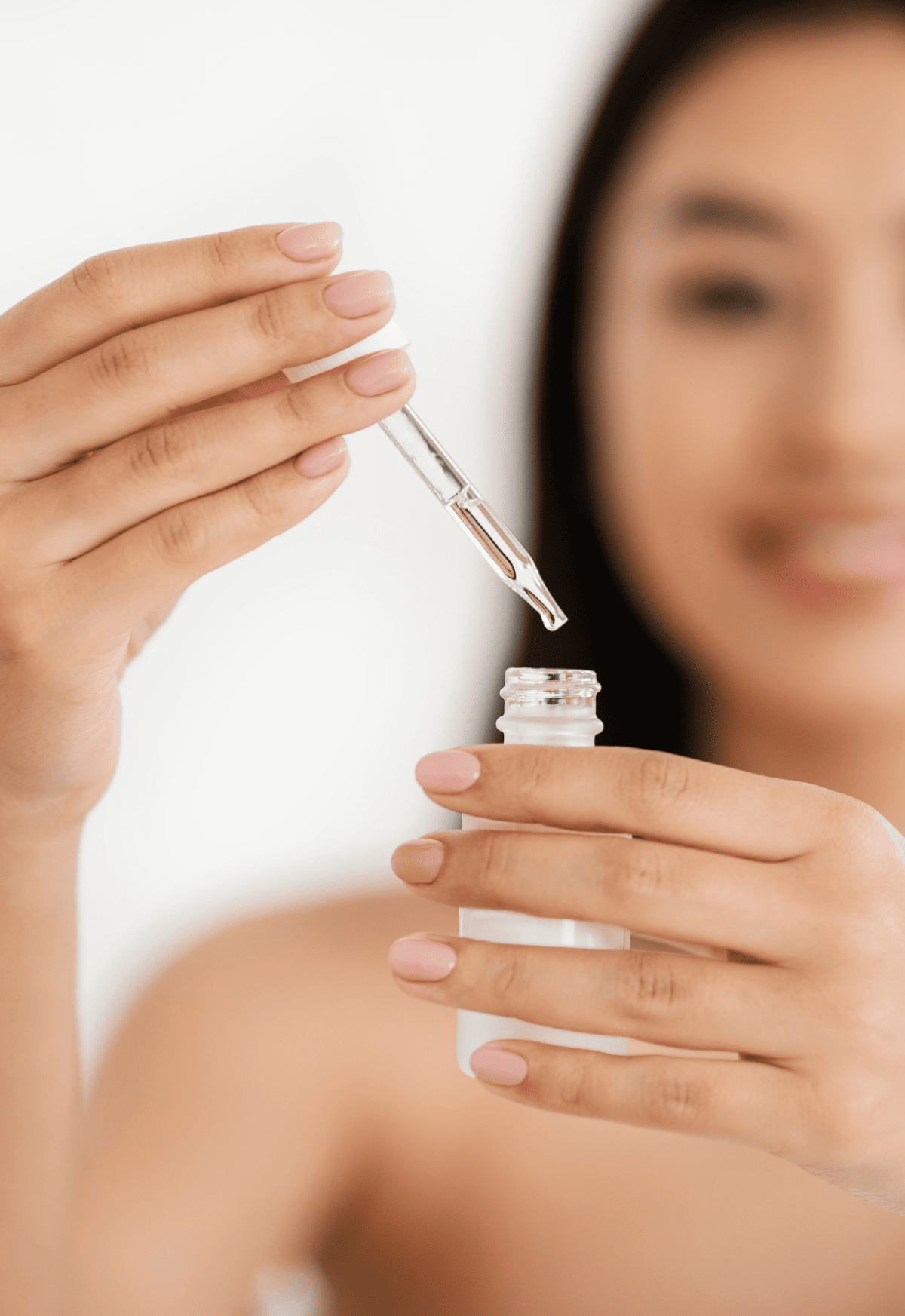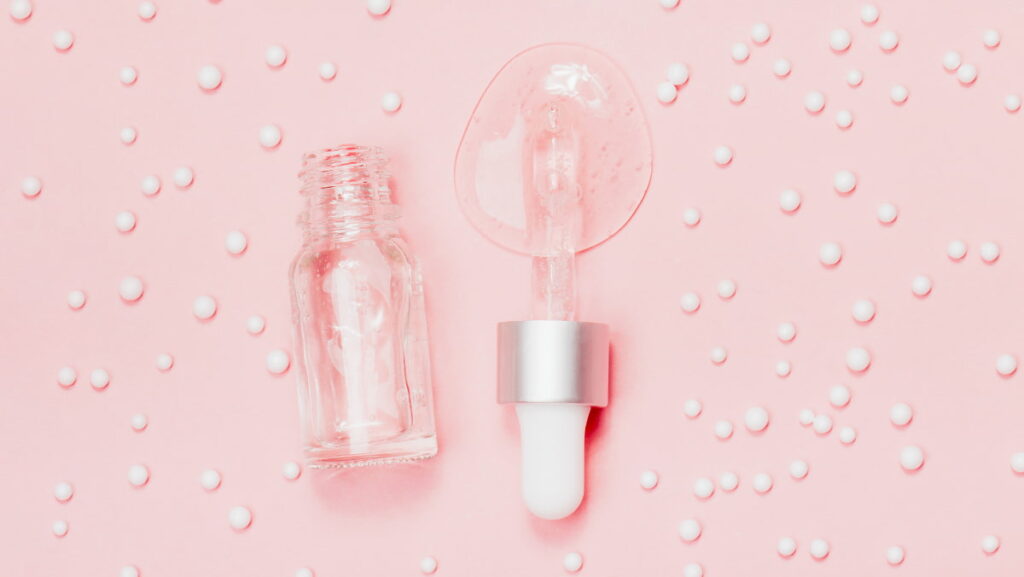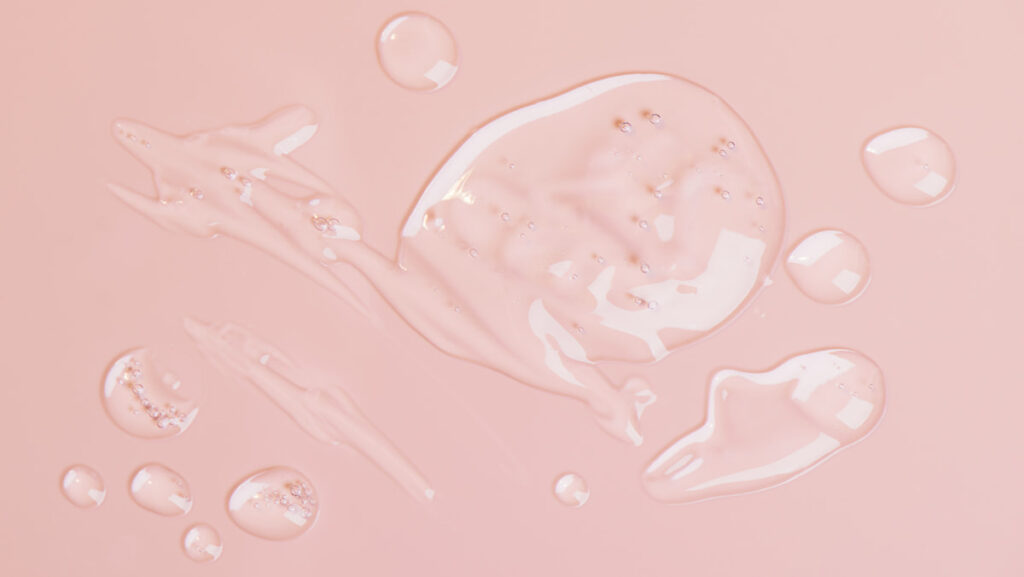
Every day, your skin combats a barrage of environmental stressors. Maintaining that healthy, glowing complexion you’ve always desired is a never-ending battle.
Have you ever wondered if there was a perfect skincare duo that could come to your rescue? Look no further. Hyaluronic acid and niacinamide are power-packed ingredients that can revolutionize your skincare routine.
These ingredients have created a buzz in the skincare world for all the right reasons. Hyaluronic acid is a naturally occurring substance in our skin that keeps your skin hydrated and plump.
On the other hand, niacinamide is a form of Vitamin B3 that aids in reducing inflammation and improving the texture of your skin by minimizing pores and fine lines.
Combining these two elements elevates your skincare regime to a whole new level. The duo works wonders to restore your skin’s moisture balance, making it more resilient and youthful.
Armed with this potent pair, your skin can finally start winning its battles—both in the mirror and behind the scenes.
I will uncover everything there is to know about hyaluronic acid and niacinamide and provide an in-depth guide on combining them for maximum effectiveness.
Understanding Hyaluronic Acid And Its Benefits
To understand the role of each ingredient in the hyaluronic acid and niacinamide combo, you need to know the basics about them. Let’s unpack hyaluronic acid first.

What Is Hyaluronic Acid
Hyaluronic acid is a sugar molecule that naturally exists in the skin and plays a vital role in maintaining its health and appearance. In the skin, it is found in the extracellular matrix, the gel-like substance that fills the spaces between skin cells.
It provides skin volume and elasticity. It also acts as a humectant, meaning it has the remarkable ability to attract and retain water more than 1,000 times its weight.
This moisture-binding property gives hyaluronic acid its ability to keep the skin plump, supple, and well-hydrated.
However, as we age, the natural production of hyaluronic acid in the skin decreases, leading to dryness, loss of elasticity, and the appearance of fine lines and wrinkles. That is why hyaluronic acid products have become so popular!
Hyaluronic Acid Benefits
When applied topically or used in skincare products, hyaluronic acid can penetrate the outermost layer of the skin, known as the stratum corneum, and deliver a punch of hydration.
This not only improves the skin’s moisture content but also helps to strengthen its natural barrier function, protecting it from environmental stressors and preventing moisture loss.
Studies have also shown that low molecular weight hyaluronic acid can penetrate deeply into the skin and reverse the signs of aging by reducing wrinkles, improving elasticity, and providing intense hydration.
Hyaluronic acid improves skin volume and boosts elasticity by stimulating the production of collagen and elastin – the components that keep your skin looking young and fresh.
It also boasts antioxidant and anti-inflammatory effects. These properties make hyaluronic acid beneficial for preventing premature aging caused by oxidative stress and soothing inflamed, irritated skin like atopic dermatitis.
Hyaluronic acid has impressive regenerative powers that make it perfect for accelerating wound healing.
So, to answer the question, what does hyaluronic acid do for your skin, here is a review of all its incredible properties:
- Hyaluronic acid has powerful hydrating properties
- It protects the natural skin barrier
- HA (low molecular) exerts anti-aging powers
- It improves skin elasticity
- It is antioxidant and anti-inflammatory, helping in skin conditions like atopic dermatitis.
- It promotes better wound healing
Breaking Down Niacinamide for Your Skin
Now, let’s break down the second ingredient of the hyaluronic acid and niacinamide combo. Here is everything you should know about the miraculous niacinamide:
What Is Niacinamide
Even if you identified yourself as a total skincare noob, you would still have heard about the almighty niacinamide.
It’s a phenomenal skincare ingredient to understand, and the more you learn about it, the more you’ll appreciate what it can do for you. It is that one ingredient that is 100% worth the hype!
So, what exactly is niacinamide? Essentially, niacinamide is a form of vitamin B3 naturally produced in our bodies. It is an all-rounder ingredient that can solve a myriad of skin concerns for almost all skin types.
Niacinamide Benefits
This powerhouse ingredient can work wonders by strengthening the skin’s lipid barrier. Only a little spotlight has been set on it, but the lipid barrier is essential in retaining moisture while protecting the skin from harmful environmental factors.
Niacinamide boasts excellent anti-inflammatory and sebum-regulatory properties, soothing the skin and minimizing the appearance of pores. This makes it perfect for those battling persistent acne and rosacea.
Niacinamide also can rejuvenate the skin by correcting hyperpigmentation, improving skin texture, and reducing fine lines and wrinkles.
Now, here is a summary of what niacinamide can do for your skin:
- Niacinamide protects the skin’s natural barrier
- Niacinamide moisturizes the skin
- It regulates oil production, minimizing the appearance of pores and preventing breakouts.
- It improves the appearance of aging skin by reducing hyperpigmentation and wrinkles.
- Niacinamide has anti-inflammatory properties that help in inflammatory skin conditions
Want to know if you can combine niacinamide and tretinoin for more radiant, acne-free skin? Check out this article.
Hyaluronic Acid And Niacinamide: Which One Should You Choose
Both hyaluronic acid and niacinamide have impressive properties that deserve every drop of attention. They also share many similarities that could make one wonder which one to pick.
Hyaluronic acid and niacinamide protect the natural lipid barrier and are moisturizing and anti-inflammatory. They also both have anti-aging powers. With so many things in common, which one should you choose?
Hyaluronic acid is superior to niacinamide when it comes to hydration and improving skin texture. It promotes collagen and elastin production, which improves skin volume and elasticity.
Niacinamide, on the other hand, is ideal for those with oily and acne-prone skin. It is also best for addressing hyperpigmentation and uneven skin tone.
To sum up, if your focus is hydration, go with hyaluronic acid. But if your main skin concern is oily skin or acne, opt for the trusted niacinamide.

Can You Use Hyaluronic Acid And Niacinamide Together?
Choosing one of the two ingredients is a true challenge. So, why choose one when you can have both? You heard that right! Hyaluronic acid and niacinamide can be used together and with fabulous results!
You’re probably skeptical about layering hyaluronic acid with other potent ingredients, but it actually plays well with most other ingredients, including niacinamide. But why should you combine hyaluronic acid and niacinamide?
If I haven’t already made clear how excited I am for this convo, you will now be certain.
What Are The Benefits Of Combining Hyaluronic Acid And Niacinamide
This power combo is a must-have in your skincare arsenal, offering numerous benefits for your skin.
When used together, they deliver a one-two punch of hydration and barrier repair. Layering hyaluronic acid and niacinamide can result in skin that’s super hydrated, resilient, and visibly plumper.
Niacinamide pitches oil regulation and skin-brightening, while hyaluronic acid brings improved skin texture and elasticity to the table.
The hyaluronic acid and niacinamide combo enhances their common benefits and fills in the areas where each one lacks.
Who Will Benefit From The Hyaluronic Acid And Niacinamide Combo?
Targeting specific skin concerns with the power duo of hyaluronic acid and niacinamide is a great idea because these two ingredients work synergistically to address multiple issues:
- Dry or Dehydrated Skin: Hyaluronic acid’s exceptional ability to attract and retain moisture, combined with niacinamide’s support in strengthening the skin barrier, make it an ideal combination for combating dryness and maintaining optimal hydration levels. Together, they replenish moisture and improve the skin’s ability to retain it.
- Aging and Wrinkles: Hyaluronic acid provides deep moisturization and enhances skin elasticity, resulting in a plumper and more rejuvenated appearance. Niacinamide’s collagen-boosting properties contribute to reducing the visibility of fine lines and wrinkles. By incorporating both ingredients into your skincare routine, you can promote a more youthful complexion and improve skin elasticity.
- Uneven Skin Tone and Hyperpigmentation: Niacinamide’s ability to inhibit melanin transfer, coupled with hyaluronic acid’s hydrating properties, can help fade dark spots, even out skin tone, and promote a brighter complexion. This combination is beneficial for individuals dealing with hyperpigmentation or post-inflammatory hyperpigmentation.
- Sensitivity and Redness: Both hyaluronic acid and niacinamide possess soothing and anti-inflammatory properties, making them suitable for individuals with sensitive or irritated skin. They can help calm redness, reduce inflammation, and relieve compromised skin.
How To Combine Hyaluronic Acid And Niacinamide
If you are intrigued to reap the benefits of the impressive hyaluronic acid and niacinamide duo, you can do so in many ways:
- Find A Product That Contains Both
- Use Hyaluronic Acid And Niacinamide In Alternate Routines Or Days
- Combine Them For Maximum Efficiency
How To Layer Hyaluronic Acid And Niacinamide In Your Skincare Routine
When I first experimented with hyaluronic acid and niacinamide, I thought that hyaluronic acid should come after niacinamide because its main action is moisturizing.
But is this the correct order to follow? What is the right way to layer hyaluronic acid and niacinamide into your skincare routine?
Let’s break down how you can integrate these wonder-working elements into your daily skincare routine:
- Start With A Clean Slate: Begin your routine with a gentle cleanser to ensure your skin is clean and primed.
- Apply Hyaluronic Acid: Hyaluronic acid works best on clean and damp skin and also creates a moisture-rich environment that enhances the absorption of niacinamide.
- Layer Niacinamide: After hyaluronic acid has soaked into your skin, apply your niacinamide. There is no reason to wait a specific amount of time between the applications because both ingredients are water-soluble, and niacinamide absorbs better on damp skin.
- Seal It With Moisturizer: Finally, seal everything in with a moisturizer of your choice. This ensures that the beneficial ingredients are locked into your skin, maximizing their effect.
Pro tip: While hyaluronic acid and niacinamide are generally gentle ingredients that work well with most skin types, you should always be cautious when trying them for the first time. Always perform a patch test of the individual products and notice how your skin reacts.
Maximizing the Benefits: Hyaluronic Acid, Niacinamide, And Other Ingredients
Hyaluronic acid and niacinamide are mild ingredients and great team players. Therefore, they interact well with other skincare ingredients, enhancing their effectiveness and addressing specific skin concerns.
Let’s explore the potential combinations and benefits of incorporating extra ingredients into your skincare routine.

Vitamin C
Vitamin C is a potent antioxidant that helps brighten the skin, reduce hyperpigmentation, and stimulate collagen production.
When combined with hyaluronic acid and niacinamide, these ingredients can work together to improve the skin’s overall texture, promote a more even skin tone, and provide intense hydration.
Vitamin C also enhances the benefits of hyaluronic acid by protecting it against free radical damage, allowing it to retain moisture more effectively.
However, vitamin C is acidic and can lower the pH of niacinamide, which might lead to temporary flushing or redness in some individuals.
To minimize this risk, you can either apply them at different times of the day (e.g., hyaluronic acid and vitamin C in the morning and niacinamide in the evening) or use a vitamin C derivative that is less likely to cause a reaction.
Retinol
Retinol is a derivative of vitamin A and is well-known for its anti-aging properties. It helps reduce the appearance of wrinkles, fine lines, and uneven skin tone.
When used alongside hyaluronic acid and niacinamide, retinol can be more tolerable, as hyaluronic acid and niacinamide provide hydration and help counteract the potential dryness and irritation that retinol may cause. In fact, niacinamide and retinol are a perfect combo for oily and acne-prone skin.
This combination promotes smoother, plumper, and more youthful-looking skin. The correct order of layering the three ingredients is using retinol first, followed by hyaluronic acid and niacinamide.
Ceramides
Ceramides are essential lipids that help maintain the skin’s barrier function, preventing moisture loss and protecting it from external irritants.
By combining hyaluronic acid and niacinamide with ceramides, you can strengthen and fortify your skin’s natural protective barrier while providing deep hydration.
This combination is particularly beneficial for individuals with dry, sensitive, or compromised skin, as it helps restore moisture and improve the skin’s overall resilience.
Peptides
Peptides are short chains of amino acids that support collagen production and help improve skin firmness and elasticity.
When used alongside hyaluronic acid and niacinamide, peptides can enhance the plumping and rejuvenating effects.
Together, they help diminish the appearance of fine lines and wrinkles, promote a more youthful complexion, and provide intense hydration.
Exfoliating Acids
Exfoliating acids, such as glycolic acid and salicylic acid, help remove dead skin cells, unclog pores, and improve skin texture.
When combined with hyaluronic acid and niacinamide, these exfoliating acids can be more gentle and less drying, as hyaluronic acid replenishes moisture and soothes the skin.
This combination helps to promote a smoother, brighter complexion while maintaining optimal hydration levels.
The correct order of application is the exfoliating acid, followed by hyaluronic acid and niacinamide. However, AHAs and BHAs acidify the skin’s pH, making a waiting time of 20-30 minutes necessary before the application of other ingredients.
Otherwise, consider using them on alternating days or at different times from hyaluronic acid and niacinamide to minimize any potential interaction.
For more insights on the niacinamide and salicylic acid combo check this out.
Wrapping Up: Why Your Skin Loves Hyaluronic Acid and Niacinamide
So, what is it about hyaluronic acid and niacinamide that makes your skin shout with glee?
Hyaluronic acid is a powerhouse of hydration with many added benefits like anti-inflammatory and antioxidant.
On the other side of the ring, niacinamide is the beloved jack of all trades. It moisturizes, reduces oil production, and reduces signs of aging and hyperpigmentation.
In summary, your skin loves both hyaluronic acid and niacinamide. Individually, they offer exceptional benefits, but when combined, they work in harmony to enhance your skin’s overall health.
Take advantage of this dynamic duo, and your skin will shine with a moisturized and rejuvenated glow!
Frequently Asked Questions
